Looking back: Highlights of WWDCs gone by
This post originally appeared on NotedTech on 12 June 2016.
With just one day until WWDC 2016 begins, I wanted to do something different. While everyone is making guesses and wishlists for this year, I wanted to look back at recent WWDC keynotes, their announcements, and what stood out for me.
2010, THE BIRTH OF RETINA

While much has happened since 2010, there is a lot that still stands out to me. While not the last WWDC keynote by Steve Jobs, I think his performance here was better than the following year. Personally, I see this being related to his health, as he seems more frail in 2011. Overall, Steve here was well composed and was able to throw in his fair share of jokes among various announcements. He was a natural on stage. While no replacement, I think Craig Federighi is the best Apple currently has when it comes to bringing back Steve’s flare.
Among other things this keynote is known for, the first is the introduction of the iPhone 4. It was the last time a new iPhone would grace the WWDC keynote. The iPhone 4 was a first in a few areas for Apple: An LED flash, a front facing camera, and the Retina display. We take all of that for granted now, but none of that existed on previous iPhones at the time.
Of course, one thing we’re quite used to now are leaks and rumors. Unfortunately for Apple, a test iPhone 4 was also leaked before the announcement, leading to the press having clear shots of the final device. But Steve handled it well on stage: “Stop me if you’ve already seen this.”
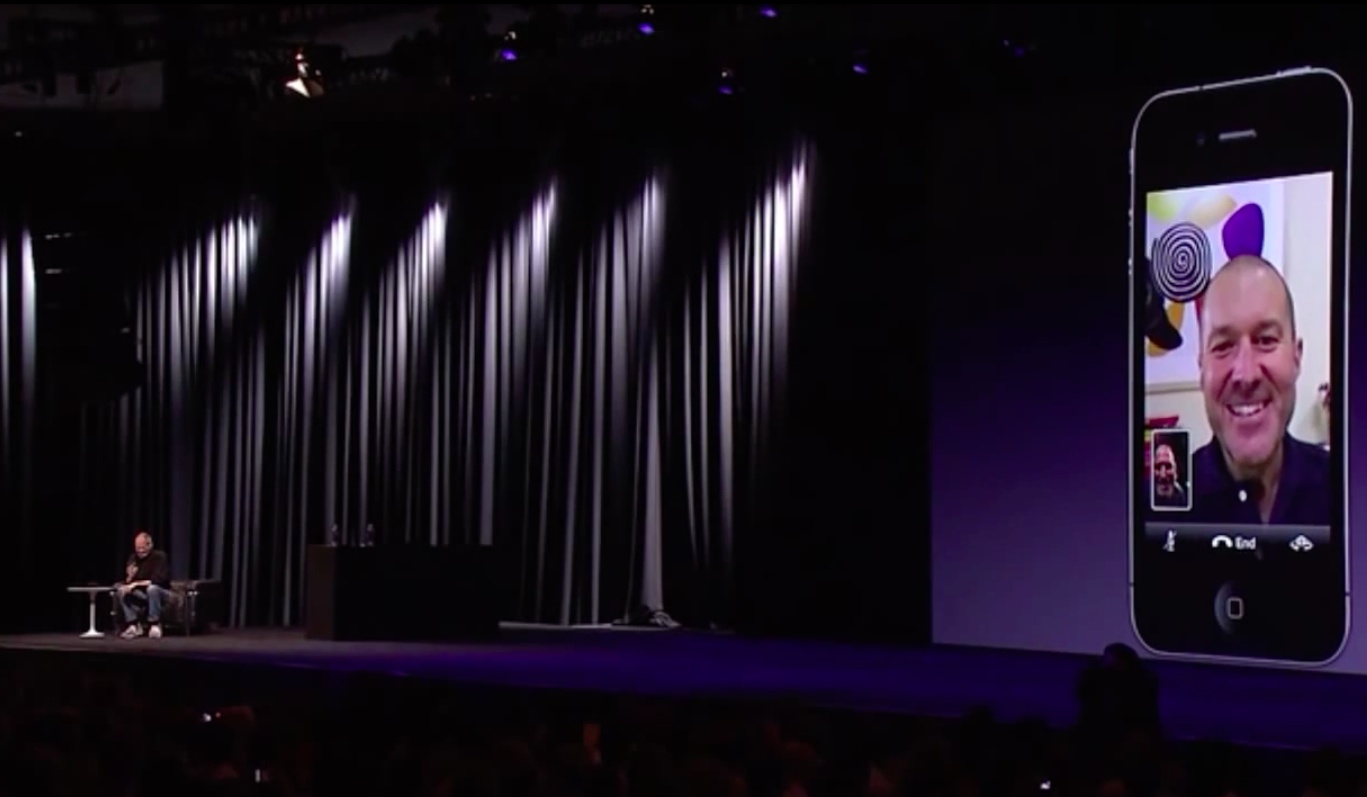
Alongside the iPhone 4 came something else that a lot of Apple users are likely quite familiar with: FaceTime. While not the first video communication system, it became the easiest way to start a video conversation with another Apple user. Since the initial introduction, we’ve seen FaceTime come to all of Apple’s mobile devices, and FaceTime Audio makes for a clear alternative to a standard phone call, especially in a WiFi-only environment.
Overall, this keynote stands out to me as one of Steve’s best. Between dealing with the announcement of a leaked product, jokes about whether or not Apple would approve their own apps, and handling WiFi problems in the middle of a demo, Steve still gave an entertaining, informative, and captivating presentation. (Well, all but the iAd demo. RIP iAds.)
2011, THE YEAR OF ICLOUD
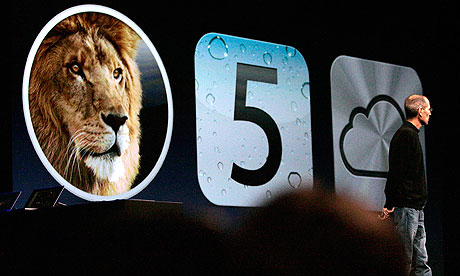
The iPhone was 4 years old; the iPad was just over 1. Despite the relatively short lives of those devices, there were plenty of technologies to bring back to their parent platform. The 2011 keynote saw a 4th preview of OS X Lion, something Apple had been beta testing for months. This brought a few technologies and improvements from iOS, including more iOS-styled interfaces and FaceTime. It also was the first OS X update distributed exclusively through the new Mac App Store.

It also was the year we saw the Mac demoted. Initially, the Mac was the hub of your digital life. Now, with the introduction of iCloud, the Mac was to be a device in the same manner as an iPhone or iPad. While some would say Apple has a ways to go on delivering that vision, it all began with 2011.
The iCloud of five years ago was missing a few of the features we’ve come to love recently. But while not having features like iCloud Drive, iCloud Photo Library, or iCloud Music Library, it did introduce a few useful features to Apple users. Calendar, Contact, and Note syncing quickly made those apps much more useful. iCloud Backup made iTunes a little less necessary for device owners. And iTunes Match, while not necessarily an iCloud feature, provided an option to access your music on devices without syncing with your Mac or PC.
But as great as that all is, iOS 5’s big feature to me, besides iCloud support and Notification Center, was iMessages. Looking back, it’s hard for me to imagine now having iMessages. Yet, five years ago, it was just being announced. This feature would lead to the iPhone, iPad, and iPod Touch being more useful as social devices. Suddenly, someone could message a friend with just an Apple ID and WiFi. Gone were the requirements of needing a cellular connection or a phone number to message others.
As this was Steve’s last WWDC keynote, it also is the last time we saw Apple’s CEO delivering the majority of the event.
2012, FORSTALL’S LAST

From the beginning, iOS development was lead by Scott Forstall. If WWDC 2011 was Steve Jobs’ last, 2012 was the last for Forstall, though no one could have known that at the time.
Ultimately, Tim Cook’s Apple was to be one based on cooperation and collaboration. While we don’t know all of the inner workings at Apple, some anonymous reports made out Forstall to be a polarizing force. Steve Jobs was able to hold onto his reins, but after Jobs’ death, he just couldn’t fit into the culture Cook was putting together.
One item in particular that Forstall presented on stage was Apple’s new Maps app in iOS 6. From the start, some users had issues with it. Google Maps, which had been on iOS up until that point, had been around longer than Apple’s service, leaving Apple trying to catch up. But even though it was inferior to some, the new service also brought turn-by-turn navigation natively to the iPhone. That, along with Flyover, made Apple Maps a shiny new application. Forstall’s pride is clearly seen as he demos it.
iOS 6 also brought Passbook, one of the initial steps ultimately leading to Apple Pay with iOS 8. Looking back, it’s possible to see Apple working on new ideas one piece at a time. Here, Passbook provided a way to put cards and codes into a single app. Next year, with the iPhone 5s, Apple would introduce a required piece of hardware side in the form of Touch ID.
On the Mac, OS X Mountain Lion brought Notification Center, iMessages, Game Center, and Notes. It was pretty clear that iOS was starting to lead when it came to new features. The Mac would eventually get iOS apps and features once they were created to fit the Mac’s interface mechanism.

And speaking of the Mac, WWDC 2012 was the birth of Retina on the Mac. The MacBook Pro with Retina started with only a 15-inch configuration and started at a price higher than the existing MacBook Pro models. But it also showed something very clear: Retina was the only way to go with a display. The new model also took some pointers from the MacBook Air in terms of removing older technologies and moving parts. Gone were the SuperDrive and spinning hard drive. Everything was flash, solid state, and ultimately made for a sleeker, more powerful MacBook Pro. In the end, it was the first of many transitions for Apple’s Mac line. And after having moved to solid state and Retina, I’ll never go back.
As iCloud began to mature, it also was starting to become clear that the iOS and OS X platforms could start doing more together. Things weren’t perfect yet (and still aren’t), but it was beginning to seem like there were more and more benefits to working across all of Apple’s devices.
2013, THE FIRST REDESIGN

Many months before WWDC 2013, rumors were flying around the various Apple blogs: iOS 7 was going to be a major redesign. Gone were the shadows, gradients, and textures of iOS 6. Everything was going to be flat.
While somewhat true, there was more to the story. Sure, plenty of textures disappeared with iOS 7, but they also disappeared from many of the apps found in OS X. The first non-cat release, Mavericks, boasted simpler UI, though it still reflected the window chrome found since Snow Leopard. Instead of seeing a calendar that might as well have been ripped up from someone’s desk, it was a clean looking Mac app.

OS X Mavericks also brought efficiency and performance improvements. While a focus of many OS updates, the particular focus showed that Apple wanted users to get the most out of their Mac, even if it was worth upgrading.
Mavericks also brought a price change: free. While Microsoft has offered free Windows 10 updates for now, they will eventually go back to a paid model. But Apple’s approach, likely offset by them making money on hardware and not software, means they can provide these updates to as many users as possible.
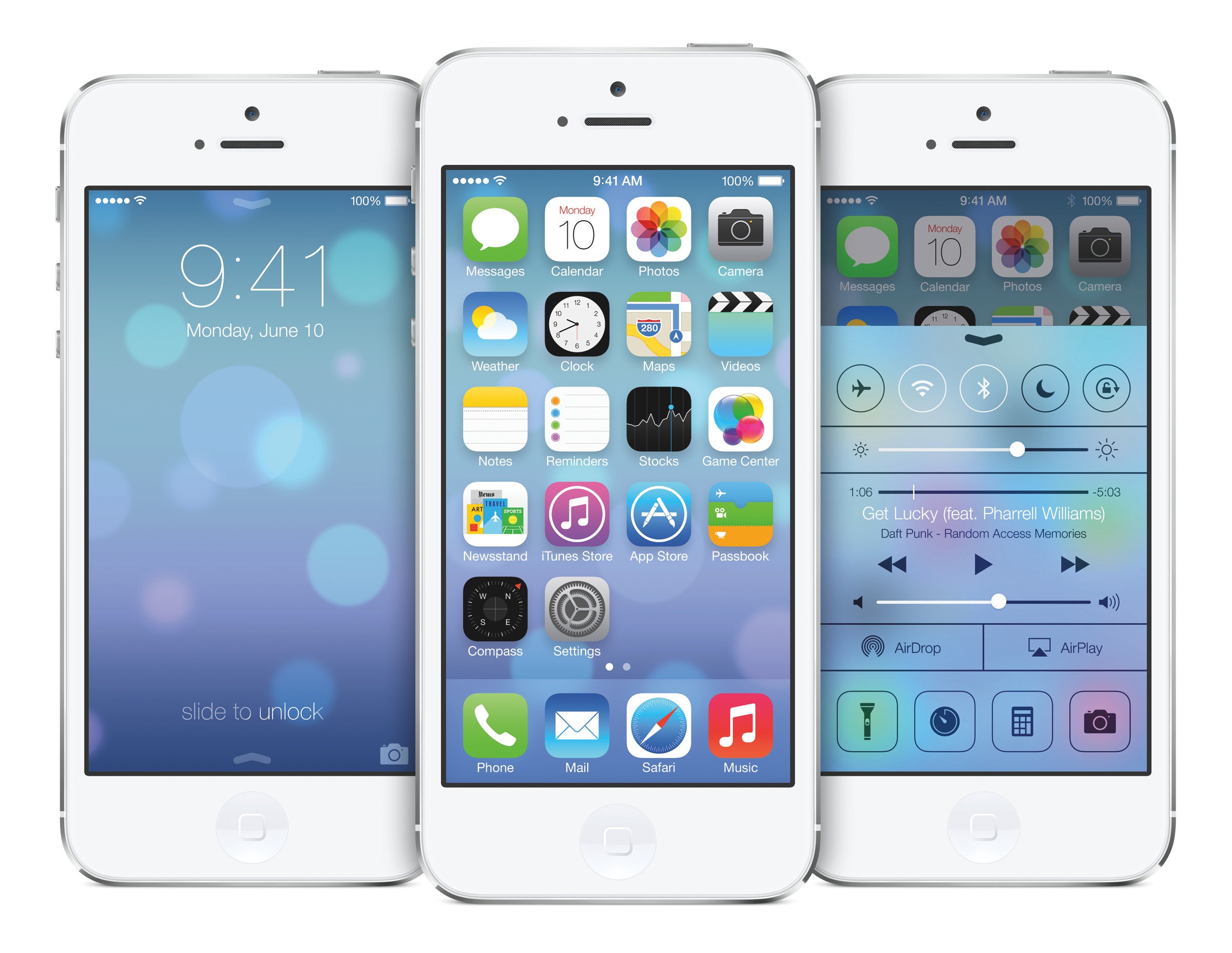
The biggest news of the keynote, of course, was iOS 7. While things seemed flatter, a lot of it ultimately seemed to be shaping up future UI for Apple. Of course, this wasn’t clear at the time. But looking back, the changes in iOS 7 ultimately lead to Apple changing OS X’s appearance in 2014, allowed for the dark but familiar UI for the Apple Watch, and brought similar changes to the Apple TV with tvOS.
I believe iOS 7 was more than just a quick redesign of the OS. I think it was purposeful planning for the future. Apple knew they wanted to go into a new direction with the Apple Watch and likely had some plans for the new Apple TV. They also were planning larger iPhones for the following year. All of that would benefit from ‘simplifying’ the operating system’s appearance.
And speaking of bringing things together…
2014, EVERYTHING COMES TOGETHER
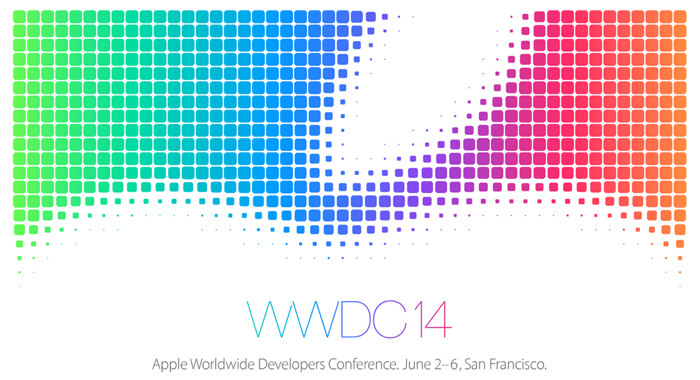
The first iPhone was famous for ‘running OS X’. While true in a certain fashion, ultimately iOS (initially “iPhone OS”) was an offshoot of OS X running on a different processor architecture. Thus, while having similar roots, for several years both were developing their own features. In 2014, both were brought up to a level that let them work almost seamlessly with each other.
To me, the 2014 WWDC keynote is the best with regards to useful user and developer features and announcements. There are just so many wonderful things that were announced that year:
- OS X Yosemite and iOS 8 both included features like Handoff and Continuity, making it easy to pick up a task from one device to another, send SMS from any device, or take a call from any device.
- iCloud Drive enhanced iCloud into something similar to Dropbox, making it easy to store documents between multiple devices.
- Extensions to iOS, letting developers create third-party keyboards, share extensions, notification widgets, and more. In a way, this was a precursor to WatchKit with the initial launch of the Apple Watch, as communicating with a Watch app was no different than sharing data with a widget or extension.
- iCloud Photo Library, and Photo enhancements in iOS 8, made it very easy to store all of your photos in one place while still keeping them accessible to all of your devices.
- HealthKit, providing a single store for applications to share health data.
- HomeKit, making it easy to control multiple smart devices in the home through Siri.
Even after announcing all of those great features, Apple still had more to give to developers with the introduction of Swift, their new programming language.

As an Apple user, this was my favorite keynote. OS X Yosemite and iOS 8 truly made it worth living entirely in the Apple ecosystem. It always gives me a good feeling when I can show off features like AirDrop, Handoff, and Continuity to owners of Apple products.
As a developer, both iOS extensions and Swift were exciting. And given that WWDC is a developer conference, it makes sense that Apple would focus on software and things directly pertaining to developers and their apps. Apple would never make us sit through an awkward half hour of a non-developer related service at WWDC…
2015, MULTITASKING (OH, AND APPLE MUSIC)
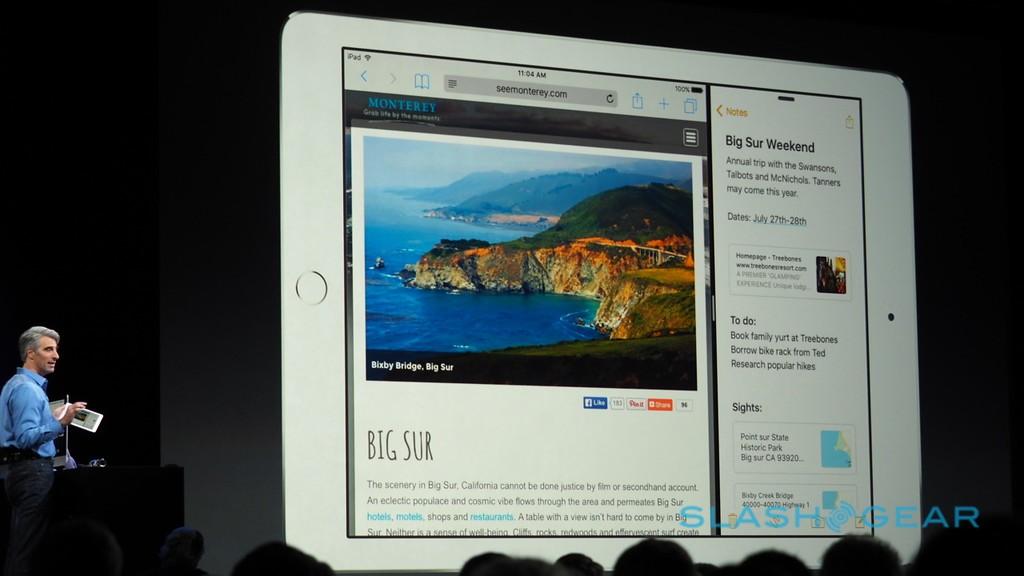
Okay, maybe Apple would make a rather long intro for something not related to developers and software at WWDC.
The big item in 2015, and the one that I use often, is iPad multitasking in iOS 9. Split View, Slide Over, and Picture-in-Picture made the iPad a more useful device. So long as an iPad has a 64-bit processor (A7 chip or newer), some form of multitasking is available.
While not as notable of a feature for some, OS X El Capitan also included split screen support for full screen apps. As someone that uses full screen apps constantly across multiple displays, this was a great feature.
Thankfully, the 2015 keynote ended after all of the software talk.
Okay, it didn’t.
Seriously, though, Apple Music seemed out of place for a developer conference. Still, Apple will make the most of their public events. And for a lot of people that I talk to, Apple Music is a great service. Me? I like my local music library, consisting of songs and albums I’ve accumulated since I was a teen. I’m not ready to trust my music needs to the cloud just yet.
2016, THE YEAR OF…
So how will I remember 2016? As this isn’t a post about my wishlist or thoughts on rumors, I’ll leave this blank. Once WWDC 2016 is behind us, then I’ll go back and say exactly what my highlights are.
If there is anything on my “wishlist”, though, it is that this year’s event is as good as 2014. That’s my current favorite. Between new user features and developer enhancements, I thoroughly enjoyed it. I only hope I’ll feel the same after Monday morning.